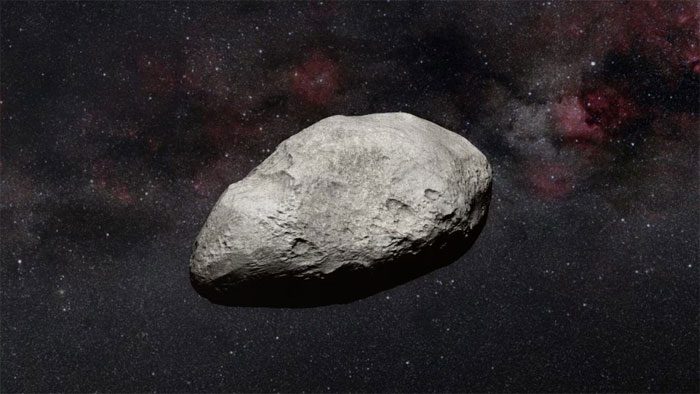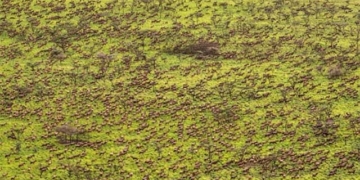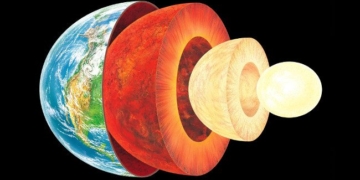Scientists Discover 2023 NT1 – an Asteroid Approximately 60m Long, on July 15, Two Days After It Passed Close to Earth.
2023 NT1 approached Earth on July 13, coming within about a quarter of the distance between Earth and the Moon, which is very close in the vastness of space. It was traveling at an estimated speed of 86,000 km/h, according to NASA. However, because 2023 NT1 was moving towards Earth from the direction of the Sun, the star’s blinding light prevented telescopes from observing it earlier.

Illustration of an asteroid approaching Earth.
By July 15, a telescope in South Africa, part of the Asteroid Terrestrial-impact Last Alert System (ATLAS) – a telescope system designed for early detection of asteroids days or weeks before a potential impact – observed 2023 NT1 moving away from Earth. More than 10 other telescopes later detected this asteroid, according to the Minor Planet Center of the International Astronomical Union.
Despite its unexpected visit, 2023 NT1 is not large enough to be considered a hazardous object. After calculating the asteroid’s orbit over the next decade, astronomers confirmed there is currently no risk of collision. A recent study indicated that Earth remains safe from large asteroids capable of causing mass extinction for the next 1,000 years.
The Sun’s direction is a well-known blind spot in the search for near-Earth asteroids, and 2023 NT1 is not the first meteorite to “sneak past” scientists. In 2013, an asteroid approximately 18m long followed a similar trajectory, obscured by the blinding sunlight, and was only detected when it exploded over Chelyabinsk, Russia. The explosion created shockwaves that damaged buildings and shattered glass over a wide area, injuring nearly 1,500 people.
Scientists are carefully monitoring over 31,000 near-Earth asteroids. They are also well aware of the dangers posed by the Sun’s blind spot. To address this, the European Space Agency (ESA) is working to implement the NEOMIR mission. The NEOMIR satellite is scheduled to launch around 2030, flying between Earth and the Sun to detect large asteroids hidden in sunlight.


















































